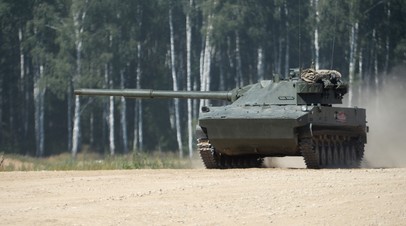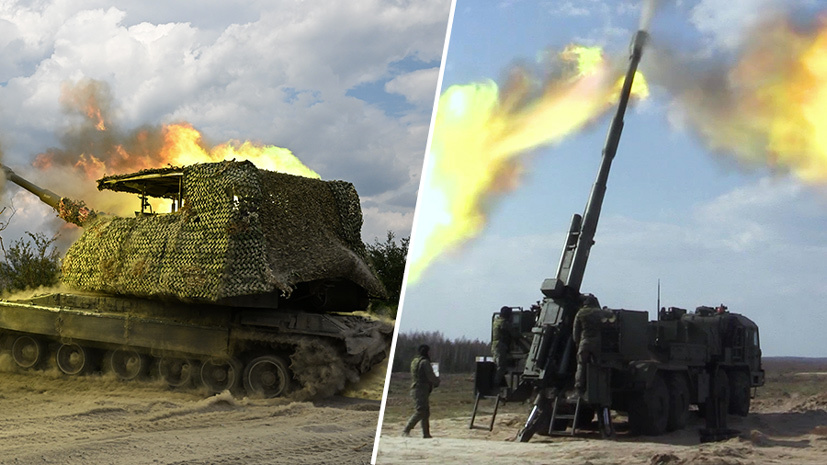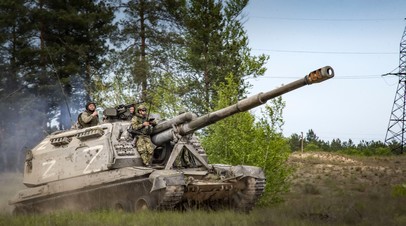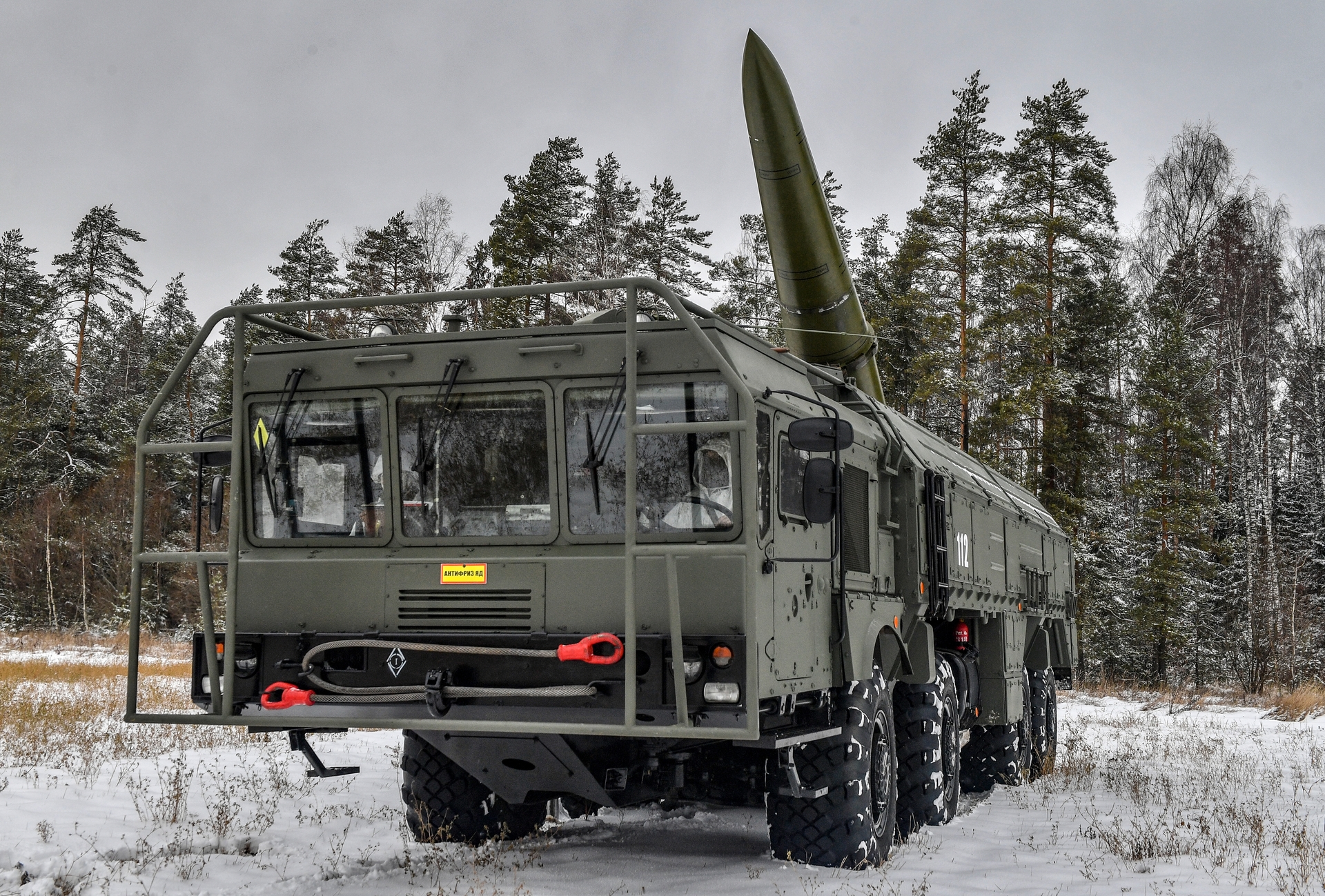Units of the Armed Forces of the Russian Federation continue to receive MLRS of the Tornado family, Iskander OTRK, as well as Msta-S and Malva mobile gun mounts. The Russian Ministry of Defense spoke about this on the occasion of the Day of Missile Forces and Artillery. The department emphasized that such systems are successfully used during special operations. Experts interviewed by RT highly appreciate the capabilities of Russian technology. At the same time, analysts note that during the Northern Military District, artillery became one of the main striking forces of the Russian army.
The Russian armed forces continue to receive modern models of artillery and missile technology, which are successfully used during the Northern Military District. This was stated by the Russian Ministry of Defense on the occasion of the celebration of the Day of Missile Forces and Artillery, which is celebrated on November 19.
In particular, MLRS of the Tornado family – 300 mm Tornado-S and 122 mm Tornado-G – are being transferred to military units.
“The advantages of these multiple launch rocket systems are the increased power of the rockets, high rate of fire, long range and mobility of the complexes,” the Ministry of Defense said in a statement.
Let us remind you that both complexes were developed at NPO Splav named after. A.N. Ganichev and are designed to hit both individual and area targets.
-
“Tornado-S”
-
RIA Novosti
-
© Sergey Pivovarov
Tornado-S is a deeply modernized version of the Soviet Smerch system. Compared to its predecessor, the new MLRS had a significantly increased firing range – from 70-90 km to 120 km. Improvements also made it possible to increase accuracy (by 15-20 times), firepower and rate of fire.
In turn, “Tornado-G” became a further development of the famous MLRS “Grad”. The firing range in the new version has doubled – from 20 to 40 km. In addition to this, the updated MLRS received more powerful ammunition and an automatic guidance and fire control system with a self-orienting gyroscopic heading and roll guidance system.
The military believes that the changes made to the design made the Tornado-G 2.5-3 times more effective than the Grad.
According to military expert Alexander Shirokorad, innovations in the Tornado family mainly affected the development of new projectiles.
“In addition, the launchers themselves have been improved – the control and guidance systems have changed. New systems can be used in conjunction with UAVs to correct strikes. Today, “Tornado” is a very effective system that is successfully used during special operations,” the analyst said in a conversation with RT.
He added that both installations have not exhausted their modernization potential.
“Tornado-S” and “Tornado-G” are now among the best such systems in the world. But the most interesting thing is that they have the potential for further improvement. There are many options for this,” Shirokorad emphasized.
Also on topic

Airborne “Sprut”: how the modernized 2S25M self-propelled anti-tank gun will strengthen the Russian airborne forces
In Russia, state tests of the modernized 125-mm self-propelled anti-tank gun 2S25M have been completed, the first deputy head…
In squall mode
The Ministry of Defense also reported that currently all missile formations of the Russian Armed Forces have been re-equipped with modern Iskander operational-tactical systems.
In addition, artillery units continue to receive modernized 2S19M2 Msta-S self-propelled howitzers and the latest 2S43 Malva self-propelled artillery guns (SAO). Both installations use 152-mm caliber shells, have an increased rate of fire and can operate in the “burst of fire” mode. As the Russian Ministry of Defense explains, in this mode, shells fired from one gun at different angles “reach the target simultaneously, thereby increasing the density of fire.”
The 2S19 Msta-S installation was created at Uraltransmash in the 1980s. The modernized howitzer 2S19M1 began to enter service with the troops in 2008, and in 2014 a version under the designation 2S19M2 was adopted. Today, both modifications are used in the RF Armed Forces.
In turn, “Malva” is the latest development of the domestic military-industrial complex – the military began receiving its first samples in 2023. The Nizhny Novgorod Central Research Institute “Burevestnik” was responsible for the creation of the CAO.

-
“Msta-S” / “Malva”
-
RIA Novosti
-
© Stanislav Krasilnikov / Ministry of Defense of the Russian Federation
The main innovation in this project compared to other Russian gun mounts was the use of a new chassis – the gun is placed on an 8 x 8 wheeled platform from the Bryansk Automobile Plant.
Also on topic

“At pinpoint targets”: how the use of high-precision projectiles increased the effectiveness of Russian artillery
The use of high-precision projectiles by the Russian army has increased the effectiveness of hitting targets in the Northern Military District zone, the Russian Ministry of Defense said. IN…
Previously, the Russian and Soviet armies used tracked artillery self-propelled guns, but the experience of the Northern Military District showed the need to create a wheeled version. According to the developers, the new chassis has made Malva more mobile and maneuverable, which is critically important in order to avoid an enemy retaliatory strike during a counter-battery fight.
In addition, the Malva is superior to tracked self-propelled artillery units in terms of range – it can travel 1.1 thousand km without refueling. In addition to this, the self-propelled joint stock company has a greater technical resource and lower operating costs.
The weight and size characteristics allow the Malva to be transported on the Il-76 military transport aircraft, which is also considered one of its advantages.
“Second Artillery War”
In a message on the occasion of the Day of Missile Forces and Artillery, the Russian Defense Ministry recalled that during the period of the Northern Military District, five artillerymen were awarded the title of Hero of Russia, 14 formations and military units became guards, and three were awarded orders.
Defense Minister Andrei Belousov also congratulated the military on their professional holiday. He noted the important role that missile forces and artillery play in inflicting fire on the enemy, conducting counter-battery warfare, and destroying enemy equipment and manpower.
“All these tasks are successfully accomplished by our missilemen and artillerymen, who act clearly and harmoniously in difficult conditions, showing perseverance and courage,” Belousov said.

-
“Iskander-M”
-
RIA Novosti
-
© Konstantin Morozov
He separately thanked the teams of defense enterprises for their work in supplying the front.
“The quality and reliability of the missile and artillery systems they created allow military personnel to honorably solve the most important tasks to ensure the security of the state,” the minister said.
According to Alexander Shirokorad, during the Northern Military District, artillery began to play a more important role than in many previous conflicts.
“I would call the current conflict the second artillery war, if the first is the world war of 1914. Tanks and aircraft, which were actively involved in World War II, have now receded into the background. Moreover, tanks often began to serve as artillery mounts – the vehicle fires several shots and leaves without approaching the enemy. It’s the same with airplanes,” he explained.
The experience of the special operation refuted the claims of some experts who in the 1990s said that the time of artillery was passing, Shirokorad added.
“Then it was even proposed to reduce the caliber of 122 mm, that is, to remove all installations of the “Gvozdika” type. As a result, 122-mm systems are also participating in air defense systems today. Now even old installations, such as the 100-mm Rapier anti-tank guns, are fighting,” the analyst added.
In a similar conversation with RT, reserve lieutenant colonel Oleg Shalandin assessed the role of artillery in the special operation.
“As we say, artillery is the “god of war.” In the Northern Military District zone, this is the main striking force and firepower of our army. It is difficult to overestimate the role of artillery and missile forces in this conflict,” Shalandin concluded.
Source: russian.rt.com


